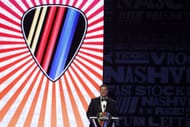NASCAR is a high-octane sport where drivers push their stock cars to the absolute limit. While raw speed is crucial for staying ahead, race winners are ultimately made by understanding race strategy and a car's performance.
Although all 40 cars have a standard 18-gallon fuel tank and can reach average speeds exceeding 160 miles per hour, simply going fast isn't a winning strategy in itself. Fuel consumption in these high-powered machines, despite the sport's technological advancements, is still measured the old-fashioned way, through math and precise calculations.
NASCAR cars lack gauges that display real-time fuel levels. Instead, team chiefs rely on the weight difference of "dump cans" before and after pit stops to calculate fuel consumption. Fuel conservation is a key element of team strategy in NASCAR. This strategy varies depending on the track layout, weather conditions, and even the race's primary objective.
While NASCAR cars may not have real-time fuel gauges, the sport is embracing advancements. Aerodynamic upgrades are commonplace, and there's even discussion about implementing regenerative braking systems.
NASCAR's fan base, traditionally valuing pure speed above all else, isn't universally welcoming of the recent aerodynamic upgrades. However, some drivers, like Chase Briscoe, are embracing the changes. Briscoe recently spoke to NASCAR.com about his thoughts on the role of aerodynamics in NASCAR racing:
“I thought you could run a little more sideways a little bit easier on exit, I think it will be better than what we had.”
NASCAR and embracing the future of high intense performance.

NASCAR and the automotive industry have always functioned well when hand in hand. Manufacturers fiercely compete on the track, knowing that a race win translates to strong sales on dealership floors. As the automotive world embraces electric vehicle (EV) technology, NASCAR looks forward to implementing the technolgical feats into a new era of racing.
One of the biggest promotional tools for any automaker is capturing the hearts and minds of consumers by winning races. A victory on the racetrack has always been a powerful sales tool, as evidenced by the famous saying "Win on Sunday, Sell on Monday."
To cater to the growing changes in the automotive world, the NASCAR president, Steve O'Donell stated in an inteview with Forbes that:
“A lot of work's gone on at the R&D department around EV's. We have a car, We have an alternative body style with that car. I would not look for us specifically to go racing with it. I think you could see it showcased at certain events next year. But there's other forms that we want to look at.”
NASCAR brings new age performance that graces America's most iconic race tracks and fans can look forward to seeing an EV powered NASCAR as early as the 2025 season.
